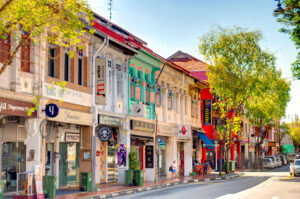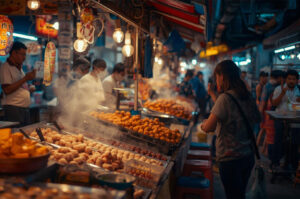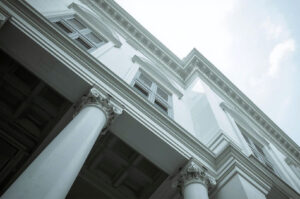Wander through the city centre of Singapore, and you’ll discover rows of colourful shophouses in Singapore tucked between modern high-rises and bustling streets. These Singapore shophouses are more than architectural gems; they serve as living storytellers of the nation’s journey from colonial Singapore to a vibrant metropolis. Their distinctive shophouse style, tied to both heritage and everyday life, shapes the urban landscape and embodies the spirit of Singapore cultural heritage.
From their unique five foot way and intricate facade ornamentation to the blend of European influences and local traditions, shophouses are landmarks of both history and resilience. This guide explores how shophouses in Singapore emerged, the artistry of their architectural styles—including the celebrated Art Deco shophouse style, early shophouse style, and modern shophouse style—their conservation and adaptive reuse, and where you can experience them today. Along the way, you’ll learn about their historical roots, key design features, and their evolving place in Singapore’s identity. (Suggested Image: A vibrant long row of colourful shophouses along Joo Chiat Road, with floral motifs and ceramic tiles, exemplifying Peranakan style.)Historical Origins of Singapore Shophouses
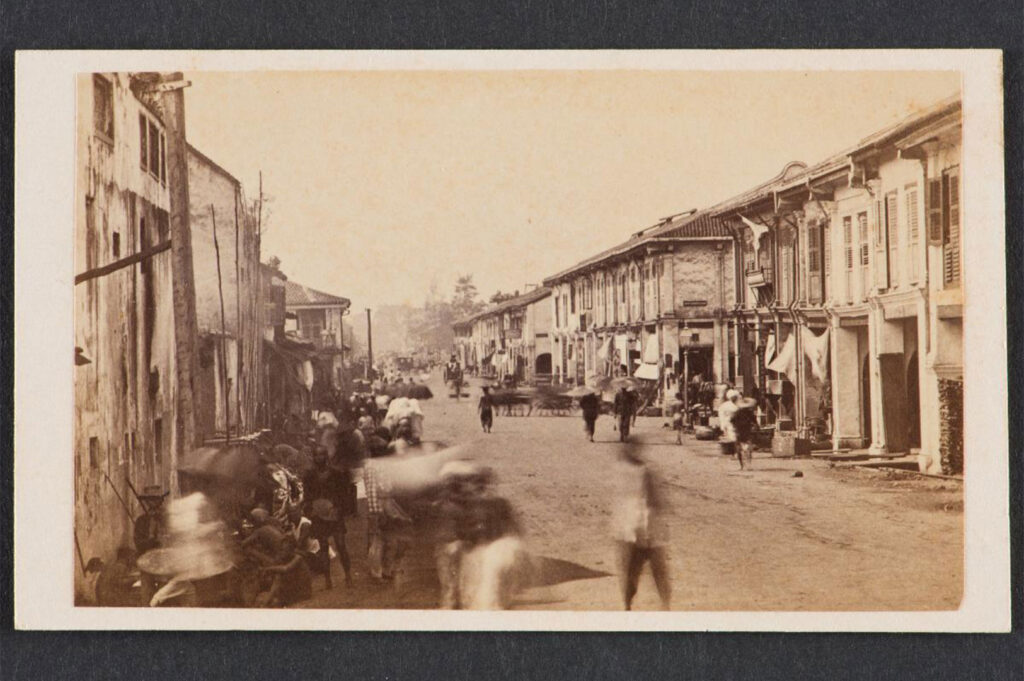
Distinctive Architectural Features of Singapore Shophouses
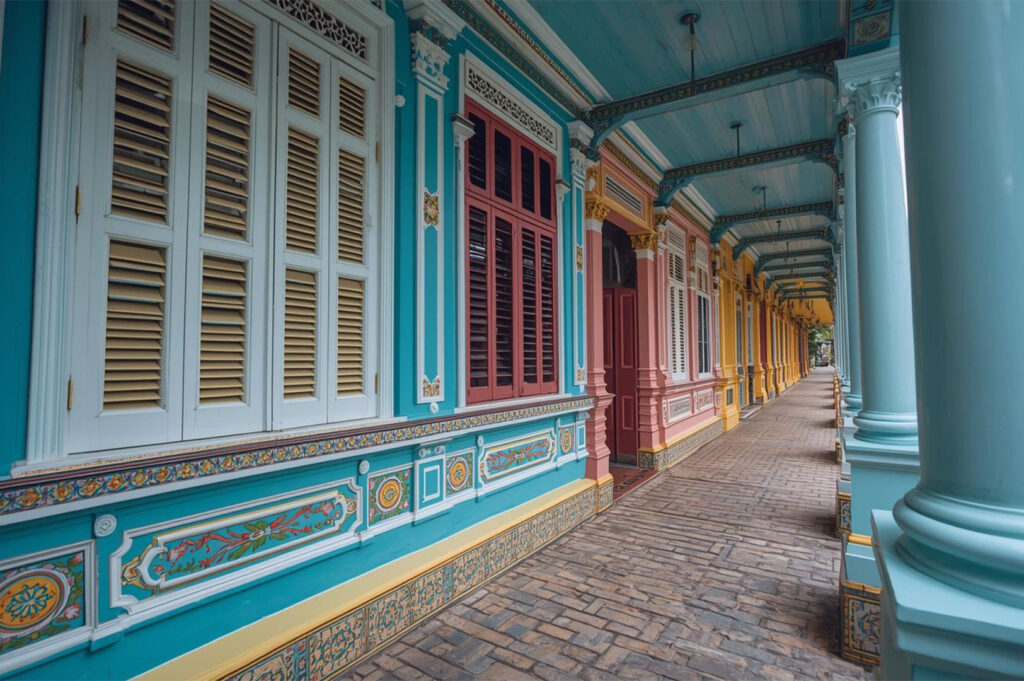
The shophouse style is celebrated for a unique blend of practicality and beauty. Central to this is the five-foot way—a continuous, covered passage along the frontage, mandated by Raffles’ Town Plan, that’s become synonymous with most shophouses. This clever design provided shelter from rain and harsh sun for shoppers and merchants, epitomizing the urban planning vision of early Singapore.
A typical shophouse is narrow in width, but extends to a certain depth, maximizing street frontage for commercial activity. Inside, the narrow, deep plan often includes an airwell or open courtyard, allowing natural light and airflow to reach even the innermost sections—essential before the era of air conditioning. On the ground floor, shop spaces feature wide swinging doors (often called pintu pagar), facilitating easy movement between street, shop, and home. The facade of a Singapore shophouse is its crowning glory. It commonly features elaborate decorative elements: colourful tiles, floral motifs, and ornate plasterwork. Timber windows, French windows, and louvered shutters were designed for cross-ventilation. Other signatures include classical motifs, zodiac characters for good luck, and walls decorated with tasteful ceramic tiles. The extensive use of lime plaster, unglazed terracotta roofing tiles, and timber frames speaks to both traditions and available materials.Evolution of Shophouse Styles Through the Eras
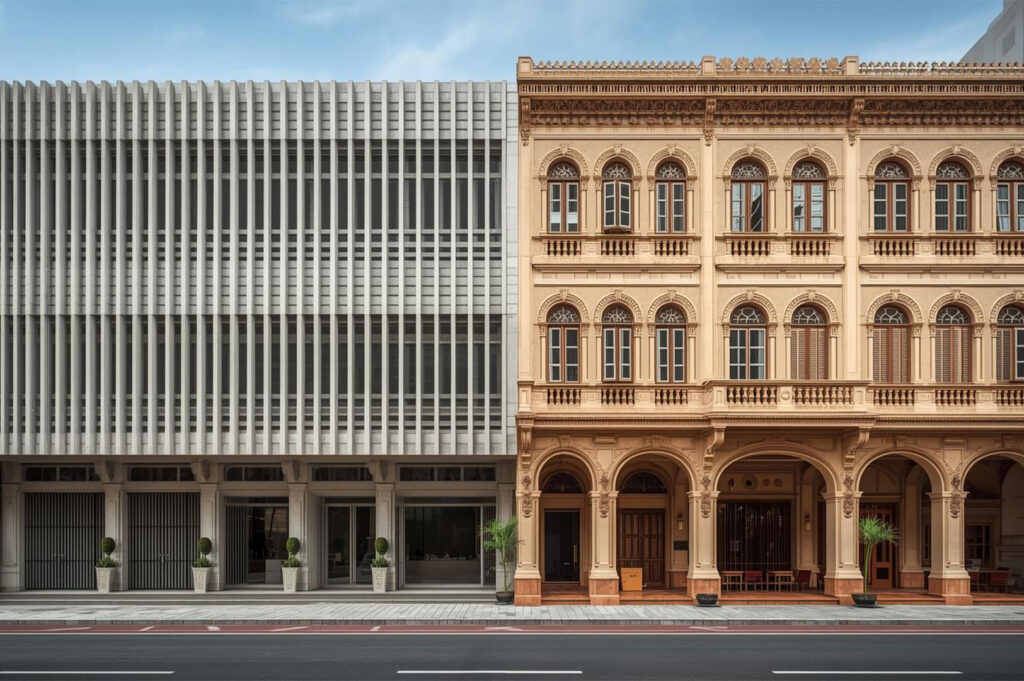
Early Shophouse Style: Simplicity in Form
The early shophouse style (1840s–1900s), also known as early style shophouses, were modest two-storey structures marked by minimal ornamentation. They stood out for their low-pitched roofs, straightforward georgian style fanlights, and functional timber windows and doors. The focus was on utility; walls were plain, with little more than an open courtyard for ventilation.First Transitional Shophouse Style
In the late 19th century, the first transitional shophouse style began to introduce more elaborate facade details, blending Chinese and Western motifs. Here, you’ll find plaster reliefs, early uses of colourful tiles, and more decorative air vents, but the building’s function as a combined home and business remained central.Late Shophouse Style & Second Transitional Shophouse Style
As Singapore grew wealthier (1900s–1940s), the late shophouse style and the second transitional shophouse style ushered in vibrant decorative trends. Also referred to as the “Singapore Eclectic” period, these shophouses are flamboyant, with extensive use of colourful tiles, floral motifs, elaborate facade ornamentation, and doors and windows intricately carved or painted. The influence of the Peranakan community is evident, especially in Joo Chiat and Katong.Art Deco Shophouse Style & Art Deco Influence
From the 1930s through the 1950s, Singapore embraced the Art Deco shophouse style, characterized by streamlined designs, bold geometric shapes, and a striking move toward modernity. Art Deco shophouses featured thin concrete fins as sunshades, air vents serving as both decorative and functional elements, stepped rooflines, and minimal ornamentation for a sleek, sophisticated look. Club Street, Keong Saik Road, and Petain Road have enduring examples of this bold era.Modern Shophouse Style
The post-war years (1950s–1960s) marked the era of the modern shophouse style. These buildings were stripped of excessive decoration, prioritizing large, airy interiors, and minimal ornamentation. Concrete sunshades, streamlined designs, and innovative ventilation showcased Singapore’s pivot into modern design without sacrificing the unique identity of the shophouse.Colourful Shophouses & Notable Districts in Singapore
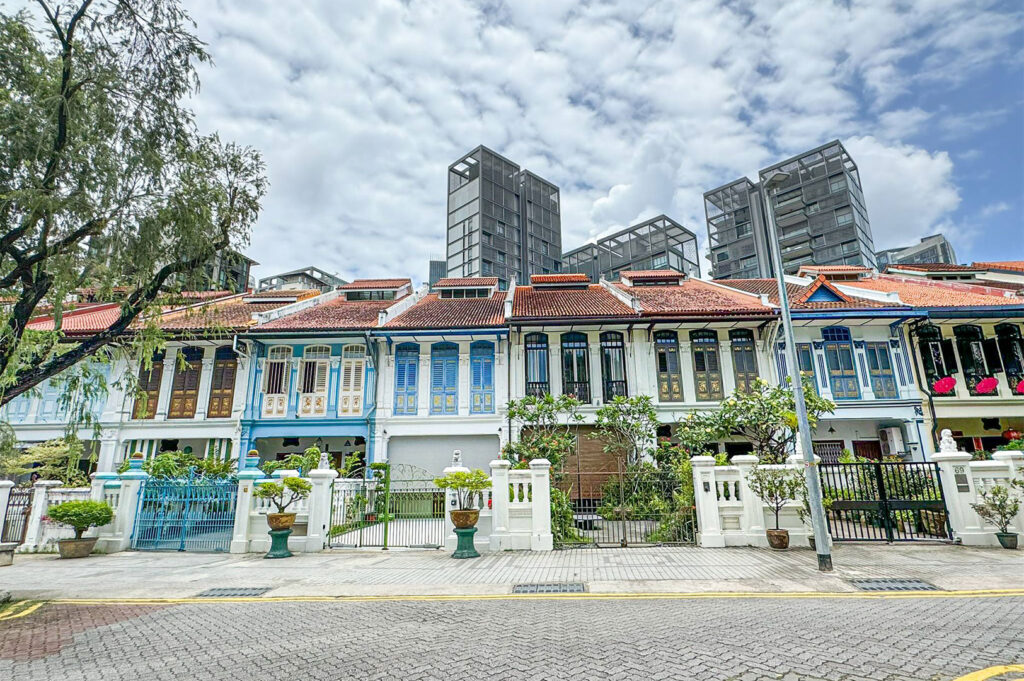
To fully appreciate the variety of shophouse architecture in Singapore, visit the city’s distinct shophouse districts, each with its own character and historical context.
- Katong & Joo Chiat: Famous for rows of colourful shophouses, especially Peranakan shophouses adorned with vibrant facades, floral motifs, and decorative tiles—these are must-sees for any visitor interested in Singapore eclectic style.
- Chinatown: Heritage-rich shophouses line streets like South Bridge Road and Club Street, showcasing both early and later transitional styles. Many house traditional clan associations, restaurants, and contemporary bars.
- Emerald Hill: Near Orchard Road, this preserved enclave features a long row of Art Deco and transitional shophouses set among leafy lanes, perfect for exploring shophouse conservation at its finest.
- Kampong Glam: Arab Street and Haji Lane are defined by shophouses with bold colours, intricate walls, and quirky boutiques and eateries, reflecting the district’s Middle Eastern influence.
- Blair Plains & Everton Park: These conservation areas are home to shophouses that blend the best features from each era—ideal for those who want a tranquil slice of heritage living.
Conservation Shophouses & Heritage Protection
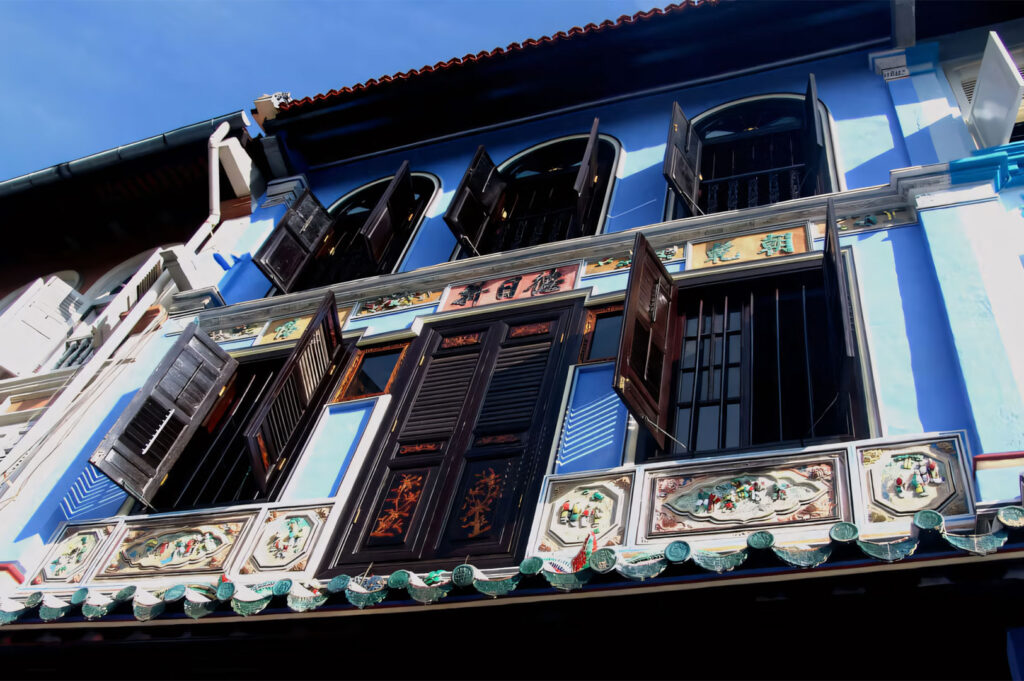
By the late 20th century, the fate of many shophouses in Singapore hung in the balance, as rapid urbanization threatened this unique heritage. Thankfully, the government, led by the Urban Redevelopment Authority (URA), established robust conservation guidelines to protect conservation shophouses and their distinctive shophouse facade and five foot ways.
Owners must comply with strict URA rules regarding facade restoration, use of traditional materials, and extensive use of original design features. Maintaining these heritage gems can entail significant expense and sourcing skilled artisans, but the rewards are great: preserved Singapore heritage buildings that celebrate history while fueling vibrant neighbourhoods. Conservation policies have saved shophouse districts and iconic areas such as Blair Road, Petain Road, and Baba House—a meticulously restored Peranakan shophouse that is now a museum, offering insight into traditional architecture and family life.Modern Shophouse Style and Adaptive Reuse
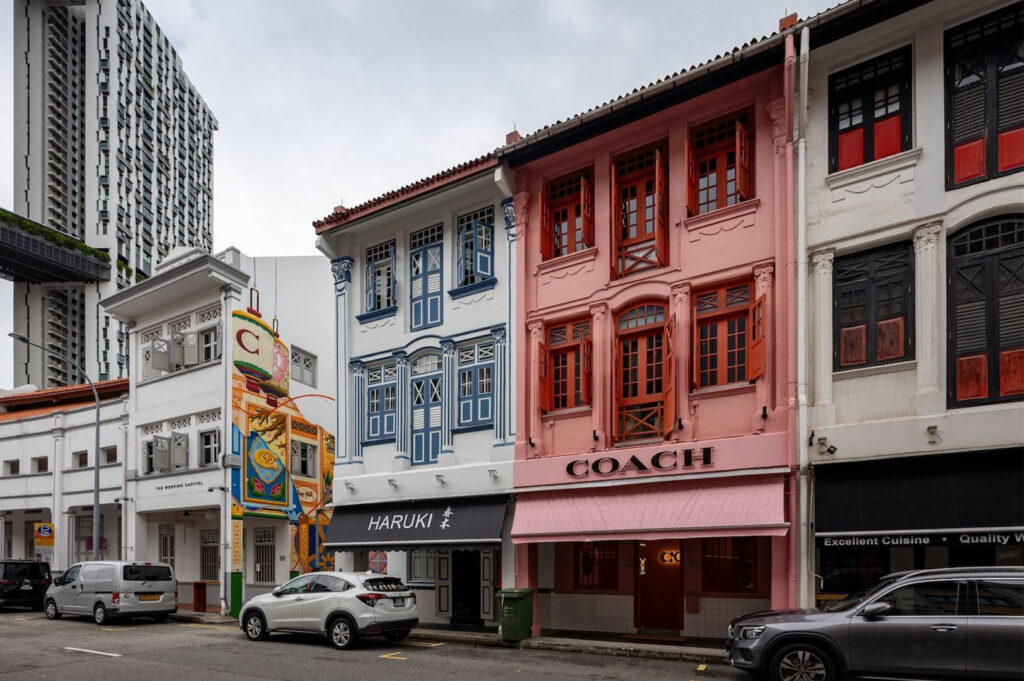
With conservation, modern shophouse design flourishes through adaptive reuse. Once reserved for families and merchants, shophouses now host everything from stylish co-working spaces and creative studios to boutique shophouse hotels and award-winning restaurants. These contemporary uses merge heritage and innovation, as architects incorporate modern amenities into traditional shells.
Some shophouses have transformed into luxurious family homes or high-value investment properties. The interiors, often featuring restored airwells and open courtyards, combine the charm of heritage with the comfort of modern living. Restaurants and cafes in historic rows—such as those on Keong Saik Road and Jalan Besar—offer diners both a taste of history and state-of-the-art culinary experiences. Commercial purposes thrive alongside cultural relevance in these revitalized districts.Conclusion: The Future of Shophouses in Singapore
Singapore shophouses are the beating heart of the city centre, bearing witness to the nation’s multicultural evolution. Their enduring relevance lies in their role as anchors of community life, economic vibrancy, and architectural beauty. As conservation shophouses face the future, balancing preservation with adaptive reuse is key to keeping these architectural gems alive and accessible.
Their unique character, from the early shophouse style and late style shophouse to the bold lines of the Art Deco shophouse and simplicity of the modern shophouse, continues to inspire. Whether strolling along a five foot way, admiring a vibrant facade, or dining in a shophouse-turned-café, residents and visitors are reminded that Singapore’s progress doesn’t erase its past. Instead, the legacy of the shophouse endures—shaping identity, nurturing community, and enriching the urban experience for generations to come.
